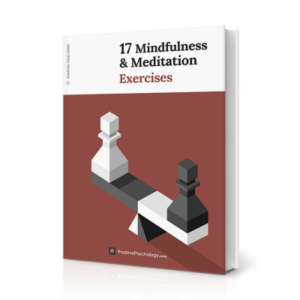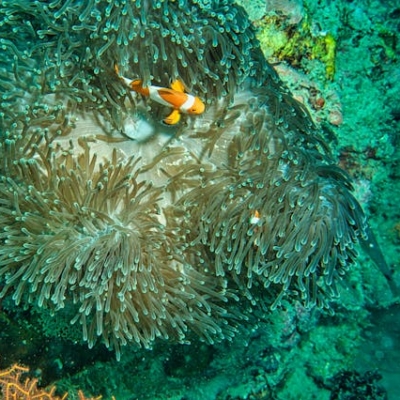High Vibe Book Recommendation by Author Florence Williams
EPISODE 200
Have you ever felt an inexplicable sense of peace while walking through a forest?
Or have you noticed how a day spent by the ocean with your feet in the sand, your bootie in the sun, and the sounds of the seagulls and kids playing on the beach can leave you feeling rejuvenated?
Well, what if I told you that these feelings are not just fleeting moments of happiness but are deeply rooted in our biology and can significantly impact our health and well-being?
What if there was a way to harness the healing power of nature to transform our lives?
In this episode, we’re diving into the pages of a fascinating book that explores these very questions:
It’s called The Nature Fix: Why Nature Makes Us Happier, Healthier, and More Creative.
This book isn’t just a collection of stories; it’s a journey backed by science that reveals nature’s profound effects on us.
It’s also this month’s high vibe book recommendation, a self-help book that calibrates at a high level of consciousness and is worthy of your consideration.
AFFILIATE DISCLAIMER: The Gardener’s Gentle Reminder
In the sprawling garden of the internet, some of the seeds we plant are special. If you choose to water them (aka click on affiliate links and make a purchase), we might get a sprinkle of support in return. It helps us keep the garden lush and vibrant without any extra rain from your pocket! Rest assured, our green thumbs only point you towards products we truly believe could make your garden flourish, too.
Introduction to the Notion That Nature Heals
The allure of a verdant forest or the serene expanse of a mountain vista isn’t just the stuff of poets and painters. Scientific inquiry has begun illuminating why these natural scenes move us so deeply.
In “The Nature Fix,” author Florence Williams delves into how our connection with the natural world profoundly influences our happiness, health, and creative capacity. Let’s journey to understand these connections and set the stage for a deeper exploration of nature’s remarkable effects on our lives.
What exactly does a daily dose of nature entail? According to “The Nature Fix,” it’s about more than just a casual stroll in the park. It represents a fundamental engagement with the environment that can benefit our mental and physical well-being immensely.
This resonates with what many of us instinctively feel: nature is a balm for the soul, reducing stress and fostering a sense of peace.
In examining the symbiotic relationship between us and our environment, “The Nature Fix” illuminates how natural settings contribute to our overall wellness.
Whether it’s reducing anger and fear or enhancing pleasant feelings, the evidence points to a clear connection: being in nature doesn’t just make us feel better emotionally; it also supports our physical wellness by improving cardiovascular health and decreasing muscle tension.
As we prepare to delve into the substance of “The Nature Fix,” consider the implications of this research for our increasingly urbanized and technology-driven lives.
The book offers not only a window into nature’s healing powers but also a clarion call to integrate these environments into our daily routines. It echoes a universal truth long celebrated in literature and art: nature holds the key to our most profound sources of joy and inspiration.
Description of The Nature Fix by Florence Williams
 Delving into the essence of Florence Williams’s The Nature Fix, we uncover a fascinating exploration of how our connection to the natural world can significantly affect our cognition, creativity, and mood.
Delving into the essence of Florence Williams’s The Nature Fix, we uncover a fascinating exploration of how our connection to the natural world can significantly affect our cognition, creativity, and mood.
Here’s the description of the book from Amazon.com:
“Highly informative and remarkably entertaining.” ―Elle
From forest trails in Korea to islands in Finland to eucalyptus groves in California, Florence Williams investigates the science behind nature’s positive effects on the brain.
Delving into brand-new research, she uncovers the powers of the natural world to improve health, promote reflection and innovation, and strengthen our relationships. As our modern lives shift dramatically indoors, these ideas―and the answers they yield―are more urgent than ever.
Explaining the Consciousness Calibrations of The Nature Fix
To set the stage…
 The Mind Body Spirit Network and our podcast, Your Weekly Dose of Higher Consciousness, are dedicated to teaching consciousness and the “energy” of things.
The Mind Body Spirit Network and our podcast, Your Weekly Dose of Higher Consciousness, are dedicated to teaching consciousness and the “energy” of things.
According to the consciousness research of Sir David R. Hawkins, M.D., Ph.D., an internationally renowned spiritual teacher, psychiatrist, physician, researcher, lecturer, and developer of the widely known Map of Consciousness®, everything that ever was and is can be measured by its level of consciousness.
He is the author of over a dozen books on consciousness, the pathway to enlightenment, and advanced spiritual topics. He is best known for Power vs Force: The Hidden Determinants of Human Behavior and The Map of Consciousness Explained: A Proven Energy Scale to Actualize Your Ultimate Potential.
Because of this, we share consciousness calibrations of self-help books. We do this because so many books and teachers in our world unwittingly teach self-help topics that “hold no truth.” They are of lower consciousness, downward-pulling, and destructive.
They aren’t good for you, and anything they purport to help you change, you won’t be able to by following their advice. You can’t necessarily blame them, though, as they likely are unfamiliar with consciousness research and where their teachings in a book or themselves are of lower consciousness. Their low-level guidance may give you what would be energetically considered an “ego boost,” but it won’t be sustainable. You will remain stuck, or worse, be pulled down into lower-level attractor fields of consciousness.
So we’re on a mission to make sure you are aware of self-help books that can actually help you and are proven in consciousness to be upward-pulling and constructive.
The Nature Fix by Florence Williams is a self-help book calibrated to be of higher consciousness, the higher mind, upward pulling, and constructive.
According to a subscription-based website and community that I belong to ConsciousnessCalibrations.com, The Nature Fix calibrates at 335 on the Map of Consciousness, or 10 to the 335th power.
This is a significant level of consciousness considering most people on the planet calibrate below 200 on the Map and are of lower consciousness.
More About the Energy Field of the Consciousness Level of 335
Every level of consciousness is an impersonal, magnetic, attractor field of energy.
For simplicity, consider the quotes, “Birds of a feather flock together.” or “Like attracts like.”
It’s kinda like that.
In my podcast, I use the metaphor of “swimming around” in the same pool of consciousness.
So to help you understand the type of energy you are “swimming around in” at the level of consciousness of The Nature Fix, I can do a search on ConsciousnessCalibrations.com to find other things or topics that calibrate at the same level of consciousness.
The energy field of consciousness at level 335 is particularly significant.
On the scale of human consciousness, this number represents an uplifting and “glad” state of being. The energy of “glad” is 335, as opposed to the energy of “happy” is 395, and “joy” is 540.
So what else is “swimming around” in The Nature Fix’s consciousness pool?
It parallels the energy found in permaculture practices, a form of agriculture that works with natural ecosystems to create sustainable and self-sufficient food systems. Humor, too, when reflecting on spiritual progress, resonates with this level, as does the content of the heartwarming drama series “Call the Midwife.”
Each exhibits qualities such as growth, nurturing, and care – attributes that align closely with the consciousness level of 335.
When we immerse ourselves in nature, we may inadvertently tap into this level, experiencing the world through a lens of wonder and appreciation. It’s not just about the fresh air or the greenery; it’s about the profound, if subtle, shift in our internal landscape that changes how we perceive and interact with the world around us.
Revisiting our previous discussion on the symbiotic relationship between humans and their environment, we see that this calibration is not just a theoretical construct. It reflects practical, measurable changes in how we feel and think when we engage with nature – an effect that Williams captures beautifully in her book.
Permaculture, Humor, and “Call the Midwife” as Manifestations of the Same Energy
 The beauty of consciousness calibration is that it doesn’t exist in isolation within the covers of The Nature Fix. Instead, it reverberates through other facets of life that share the same calibration or energy level. Permaculture, with its roots deep in the earth and its branches reaching out to sustain life, mirrors this concept. It’s about living in harmony with the land, much like how being in nature harmonizes our inner selves.
The beauty of consciousness calibration is that it doesn’t exist in isolation within the covers of The Nature Fix. Instead, it reverberates through other facets of life that share the same calibration or energy level. Permaculture, with its roots deep in the earth and its branches reaching out to sustain life, mirrors this concept. It’s about living in harmony with the land, much like how being in nature harmonizes our inner selves.
Similarly, humor – especially when it signifies spiritual growth – can be a manifestation of high-level consciousness. Laughter is often said to be the best medicine, and there’s truth to this adage. It elevates our spirits and brings lightness to our being, similar to the effects of spending time in a lush forest or a tranquil garden.
Lastly, the drama series “Call the Midwife” encapsulates this spirit by portraying life’s challenges and triumphs. The show reflects the resilience and compassion inherent in human nature, themes that resonate deeply with the nurturing energy of the consciousness level of 335.
The Nature Fix provides a lens through which we can view nature and various cultural and creative expressions as conduits for higher consciousness. We foster a sense of happiness, health, and creativity by understanding and engaging with these expressions.
The Influence of Nature on Happiness
Imagine the gentle caress of a cool breeze, the symphony of birdsong, and the lush tapestry of greens in a forest. These are not just sensory delights but gateways to happiness. A Nature Fix. The natural world has an uncanny ability to evoke positive emotions such as calmness, joy, and creativity, acting as nature’s own brand of therapy.
Emotional Elevation Through Nature’s Serenity
When we immerse ourselves in natural settings, the chaos of our daily lives seems to pause, allowing a unique form of peace to wash over us. Studies have shown that being in nature—or even viewing scenes of it—can diminish feelings of anger, fear, and stress while enhancing pleasant emotions. This emotional uplift is more than subjective; physiological markers like reduced blood pressure and lower heart rate show us that our bodies respond in kind to the soothing effects of nature.
A Direct Connection: Nature and Our Happiness
The bond between human beings and the environment extends deep into our consciousness. This interconnectedness, often called ‘nature connectedness,’ aligns closely with increased happiness levels. As our affinity with nature grows, so does our sense of well-being. People who feel connected to nature tend to report greater life satisfaction, a finding that challenges us to rethink our relationship with the natural world.
Nature as a Balm for Mental Health
In the realm of mental health, nature’s role is transformative. Its capacity to reduce symptoms of depression and anxiety is profound. Access to natural spaces can improve sleep quality, foster positive social interactions, and even imbue a sense of meaning to life. It’s no wonder therapeutic practices like ecotherapy are gaining traction, integrating the healing power of nature into mental health treatment plans.
Explore Tools for Connecting with Your Innate Happiness, Health & Creativity from PositivePsychology.com
The Relationship Between Nature and Creativity
Can a walk in the woods genuinely spark a revolution in your mind? Let’s delve into how nature isn’t just a backdrop for contemplation but a catalyst for cognitive enhancement and creative thinking.
Enhanced Cognitive Function, Attention, and Working Memory
“Attentional restoration” is central to understanding the cognitive benefits of time amidst nature. This theory, developed by Rachel and Stephen Kaplan in the 1980s in their book The Experience of Nature: A Psychological Perspective, suggests that natural environments offer a unique kind of rest for our brains.
Unlike urban settings, which can be mentally taxing, nature provides a gentle, engaging stimulus that allows our directed attention faculties to recover from fatigue.
Natural settings help replenish our mental reserves, resulting in improved attention spans, sharper focus, and a more robust working memory. Empirical studies back up this claim, demonstrating that even viewing nature scenes can have a positive effect.
For instance, a study in Scientific Reports found that participants exposed to indoor environments with nature displayed better working memory performance and lower brain activity associated with stress and cognitive load. It’s fascinating to consider that not only does nature soothe, but it also primes our brains for higher levels of functioning.
Nature’s Boost to Creativity
With improved cognitive functions comes an exciting side effect: heightened creativity. When our minds are clearer and less cluttered with distractions, there’s more room for innovative thoughts and ideas to surface.
With its inherent complexity and novelty, nature stimulates our sensory perceptions in ways that urban environments often don’t. It encourages divergent thinking, an essential component of creativity, which involves generating multiple solutions to a problem.
Picture yourself meandering through a forest; the patterns, textures, and sounds you encounter could spur connections you might not make while sitting in a sterile office.
The cognitive improvements garnered from these experiences lay the groundwork for creative insights and the development of novel concepts.
Making Unique Connections and Abstract Thinking
Nature’s role in helping individuals think abstractly and make unique connections cannot be overstated.
Abstract thinking is the ability to consider concepts beyond the concrete and present situations. In nature, we’re not bound by the rigid structures and schedules that govern much of our lives.
This freedom allows the mind to wander and explore possibilities without constraints. Moreover, the diversity and richness of natural environments mean endless stimuli to engage with, each offering a new perspective or idea.
Whether it’s the intricate web of an ecosystem or the unpredictable way a stream carves its path through the landscape, nature serves as a living canvas that invites us to think outside the lines.
So next time you find yourself stuck on a problem, consider stepping out into the green. You might just find the key to unlock your next big idea under the canopy of a tree or in the rustling of leaves.
Nature, it seems, is not only where we can find peace but also where we can find inspiration and solutions to complex problems. Often, breakthroughs in various disciplines, including technology, medicine, and urban planning, are inspired by the structures, systems, and processes found in the natural world—a concept known as biomimicry.
For instance, studying birds and their flight mechanics has informed aeronautical engineering, and examining plant photosynthesis has led to innovative approaches in solar energy harvesting. Similarly, observing ant colonies’ decentralized yet highly efficient organization has provided insights into network algorithms and robotics.
Thus, nature’s intricate and evolved patterns serve as a rich source of analogies and models for human innovation and creative problem-solving.
The Interplay Between Nature and Health
The interplay between nature and human health has been a subject of interest within various fields, including psychology, environmental studies, and public health. To construct a discussion around this relationship, we begin by acknowledging the concept of biophilia, as proposed by E.O. Wilson, which suggests that
humans have an innate affinity for connecting with nature and living systems.
Psychological Restoration: The Attention Restoration Theory Perspective
Research demonstrates that exposure to natural environments can reduce stress and enhance mood and overall psychological well-being. This phenomenon is often explained through the Attention Restoration Theory (ART) framework, positing that nature provides a therapeutic environment that helps replenish cognitive resources depleted by directed attention tasks.
Natural settings, by their sensory-rich but not overwhelming features, elicit involuntary attention that allows for recovery of directed attention capacity.
The therapeutic effects of nature are also observed in physiological measures. Interactions with nature have been found to reduce blood pressure, alleviate symptoms of anxiety and depression, and improve immune system function. This effect can be attributed to various factors, such as increased physical activity while engaging with nature, improved air quality, and exposure to diverse microbiota, which can influence the gut-brain axis.
Designing for Well-being: Nature-Inspired Urban and Architectural Solutions
Urban design and public health initiatives have capitalized on these findings by implementing green spaces such as parks, community gardens, and greenways, which foster ecological biodiversity and promote social cohesion and physical activity among community members.
Moreover, nature’s contribution to health extends to its role in fostering social interactions and community cohesion. Accessible green spaces act as communal hubs that enhance social connections and provide opportunities for physical activities, which is essential for psychological and physical health.
Healing Spaces: The Role of Nature in Enhanced Recovery and Patient Care
In addition to direct exposure, even indirect or vicarious experiences of nature through windows or imagery have yielded health benefits, leading to incorporating nature-based design in hospitals, workplaces, and schools as a means to boost well-being and productivity.
There is an emerging trend towards evidence-based design practices that incorporate these principles to enhance healing environments, with numerous studies documenting the positive outcomes of such designs on patient recovery times and well-being.
Therefore, the relationship between nature and health is multifaceted and deeply intertwined with psychological restoration, physical well-being, and social interaction considerations. Understanding and harnessing this relationship is vital to promoting public health and well-being in individual and societal contexts.
Other Tools & Resources
- Tips on How to Be Happy and Positive in Life
- Overcoming Creative Blocks: A Book Review of ‘The Artist’s Way’ and Its Impact on Creativity
- And while you are in nature…Become a Master of Mindfulness
- Discover the Art of Living with Purpose with Rich Roll
- How to Create More Happiness & Find Meaning in Your Life with Charlie Knoles
- A Six-Step Process for Radical Self-Healing: Get Back to 100% with Lissa Rankin, M.D., Physician and New York Times Best-Selling Author
Conclusion: Embracing the Essence of Nature for Holistic Well-being
In summarizing the rich tapestry of interconnections between humans and nature, our exploration reveals a profound truth: nature is not merely a setting for our existence but a partner in our well-being.
The powerful influence of natural environments on our happiness, mental health, creativity, and overall health highlights the necessity of integrating nature into our lives. Our biophilic connections are a testament to our evolutionary heritage and emphasize the benefits of a life entwined with the natural world.
Through psychological restoration afforded by the tranquility of natural settings, we replenish our cognitive reserves, unlock creativity, and restore our mental balance. The Attention Restoration Theory provides a framework for understanding how such environments revive our overtaxed attention systems, rendering us more present, focused, and effective in our daily tasks.
Physically, our natural immersion invokes harmony within our bodies, evidenced by improved physical health indicators. From reducing stress-related biomarkers such as blood pressure to enhancing immune function, the empirical findings assert nature’s role in promoting physiological well-being.
Urban and architectural design increasingly embraces biophilic design principles, recognizing the innate human need to connect with nature. By incorporating elements such as natural lighting, vegetation, and materials that mimic natural patterns, we create spaces that look better and make us feel better—a testament to the inextricable link between our surroundings and our state of mind.
The social dimension of green spaces as hubs of community interaction underscores the importance of accessible nature in fostering social well-being and cohesion. In environments where humans can gather and engage in physical activity, we see an amplification of nature’s benefits through the power of community.
As we conclude, let’s remember that the multitude of health benefits we derive from our relationship with nature cannot be overstated.
By consciously embedding nature into our urban landscapes, policies, and daily lives, we pay homage to the natural world and invest in our collective future.
In this future, the healing power of nature is interwoven with every aspect of human health and happiness. In embracing the essence of nature, we nurture a more sustainable, fulfilling, and holistic well-being for ourselves and generations to come.























Leave a Reply